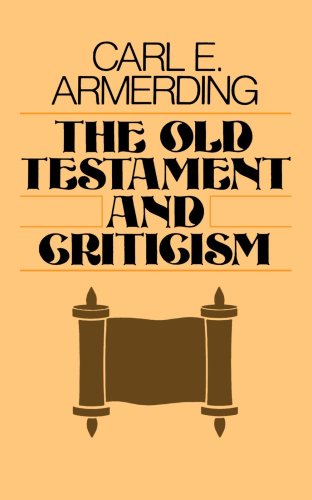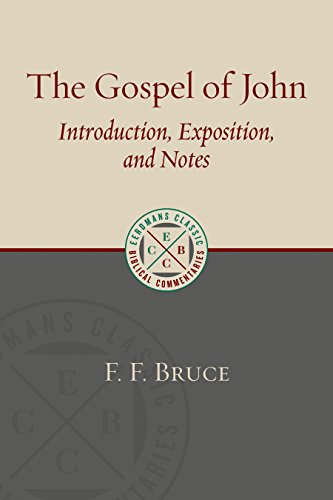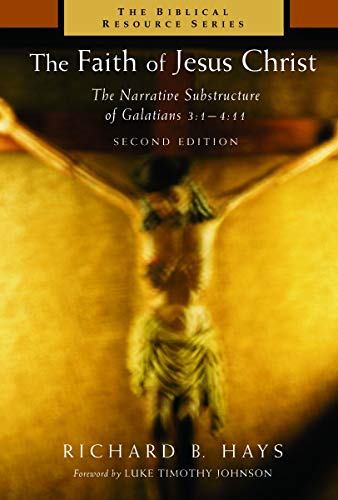The Old Testament and Criticism
Written by Carl E. Armerding Reviewed By T. Desmond AlexanderUnderstanding and evaluating modern critical approaches to the study of the Old Testament can be a very real problem for any theological student; however, for the evangelical student, committed to the belief that the Bible is the Word of God, the problems raised are manifold. For this reason Armerding’s work is to be welcomed, not only because it provides a useful guide to the various types of Old Testament criticism, but also because it offers helpful advice as to how the evangelical student should respond to the diversity of approaches now available.
In his initial chapter Armerding suggests that an evangelical critic will view Scripture as both a divine and human work. This approach avoids the shortcomings of the ‘traditional’ or ‘conservative’ position which ‘holds that the Bible is so purely the Word of God that it almost ceases to be in any meaningful sense the words of men’ (p. 4) and the ‘rationalist’ position which views the Bible as merely human words and thoughts. This emphasis is certainly helpful, although one wonders if it is really accurate to cite W. J. Martin, D. J. Wiseman, G. L. Archer and E. J. Young as ‘traditional’ scholars (p. 5, n. 6), at least according to Armerding’s definition of the term.
Armerding’s evaluation of ‘literary’ (or more accurately ‘source’) criticism demands careful consideration. While he rejects the view that the Pentateuch is composed of four main sources (J, E, D, P), Armerding concludes that the methods used by literary critics are ‘basically sound’ (p. 41). This, however, is surely an overly optimistic appraisal of this approach, and students ought to be made more aware of the dangers and difficulties in trying to go behind the present form of the biblical text. Indeed it should be stressed that on past performance source criticism has generally been more of a hindrance than a help to understanding the Old Testament.
In chapter three Armerding gives a positive, although not uncritical, assessment of form criticism. However, once again insufficient attention is given to the difficult step of moving back from the present written form of the biblical text to an earlier oral form; this is especially so for narrative works, e.g. Genesis. In this regard it is disappointing that Armerding makes no mention of the provocative essay by S. M. Warner, ‘Primitive Saga Men’, Vetus Testamentum, 29 (1979), pp. 325–335.
Chapter four provides a useful introduction to structural analysis, although the discussion in places may prove too complex for many students. A surprising feature of this chapter is the way in which ‘rhetorical criticism’ is barely mentioned, whereas other structuralist approaches dominate the discussion. Yet, for the evangelical student in particular, rhetorical criticism is likely to prove one of the most useful methods of approaching the biblical material.
The final section on textual criticism introduces another complex area. Here a few minor points are worth mentioning. Firstly, Armerding’s proposal that the ‘original text’ of the Old Testament is to be identified as the ‘canonical text’ (p. 99) requires further clarification. Presumably this refers to the earliest Hebrew canon, although others, especially Roman Catholic scholars, might see this as applicable to the later Greek canon. Secondly, Armerding’s use of Amos 6:12 (p. 123) as an example of ‘incorrect division’ is unfortunate. Given that there is no textual support for this emendation, the proposal that the text ought to be altered is a literary-critical rather than a textual decision.
Two features detract from the general usefulness of the book as an introduction for theological students. Firstly, it is unfortunate that the book lacks any appraisal of the relative worth of the different methods discussed. Thus the student is left to discover for himself which approach is likely to prove the most useful for understanding the text of the Old Testament. Secondly, apart from works discussed in the text or footnotes, the book lacks bibliographical details of recent writings (especially articles and essays) on the various topics discussed. For those wishing to pursue these subjects in more detail some guidance would have been helpful.
Armerding’s presentation and assessment of modern critical approaches to the Old Testament will certainly prove most useful for those encountering these methods for the first time. However, it should be noted that not all evangelical scholars are likely to agree with Armerding’s generally positive assessment of Old Testament critical methods.
T. Desmond Alexander
Union Theological College, Belfast






